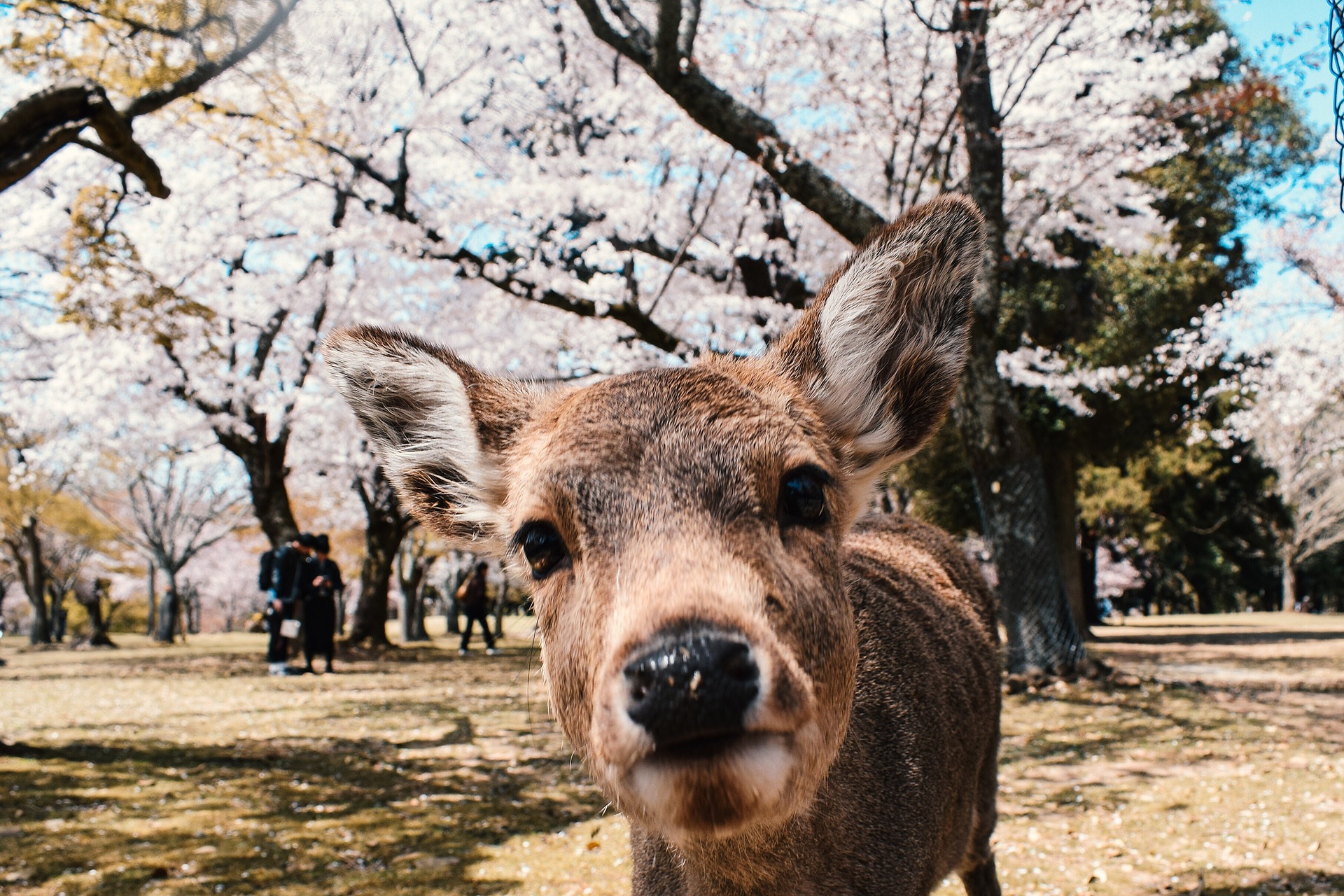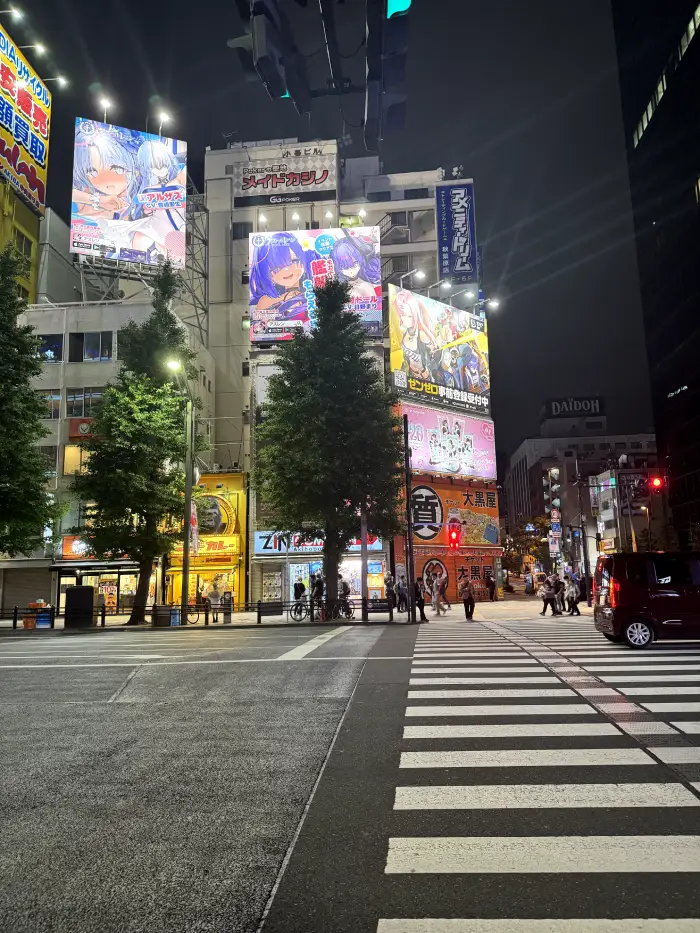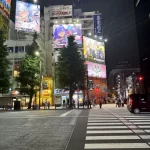When we plan our trip our first solo trip to Japan, what comes before our eyes is the beauty and duality the major cities in the country provide. The glitzy, glamourous, and blinding city lights juxtaposed with a touch of tradition that is indeed Japan for you. But in a quest for this contradiction, we often overlook the little things. Or the small nook and corners of the city that, if not explored, will be your biggest regret.
One such place that should absolutely be on your Japan itinerary is Nara. A jewel of the Kansai region, Nara is a picturesque city that, along with Kyoto, gives you a foray into historical and traditional Japan. Known for its oldest temples in Japan, Nara is indeed a slice of history that seems to be untouched by the modern world. And if you love history and tradition, this is just the place for you.
Not just temples, in Nara, you can also meet beautiful and friendly wild deer that are not behind cages but rather out in the open roaming around. So, why don’t we delve into this beautiful city to make things easier for your ultimate female solo trip to Nara?
Let’s turn the clock back!
Though Tokyo is the capital of Japan now, it wasn’t always so. Capitals in Japan moved from place to place depending on which emperor was in power. And it all began with Nara! This city was Japan’s first permanent capital when it was known as Heijo. It became the seat of the government in 710, but when the influence of the powerful Buddhist monasteries grew, it posed a serious threat, and it was then that the government was moved to Nagaoka in 784 before moving to Kyoto, where it stood for over a thousand years.

As this was the capital of the country, Nara is culturally rich and a pretty significant country. In this city, you will find eight historical attractions that now make up the UNESCO world heritage site clubbed together and called Historic Monuments of Ancient Nara.
How to reach
Not even an hour away by train from Kyoto and Osaka, Nara is the perfect day getaway. But if you are not looking to devour but would rather enjoy the beauty this city provides to you on a platter, I suggest you stay the night.
Where to stay
There are enough attractions that warrant a night’s stay here. You can choose to either stay in historical establishments or even a traditional ryokan probably tucked in the woods somewhere.
If you are not looking to stay anywhere traditional yet with a bit of history, you should definitely try Nara Hotel. Built-in 1909, this is one of the oldest hotels in the city and boasts of hosting guests like Albert Einstein and Richard Nixon.
But if you want to immerse yourself into history while also enjoying the view, you should put up at Asukasou, a ryokan with a communal open-air bath that overlooks a five-storey pagoda. It looks particularly beautiful when the pagoda lights up after sundown.
Best time to go

The two best times to visit Nara is the Fall season during October and November and Spring that begins in March and goes on till about May in Japan. But due to a temperate climate, you can visit and explore the city’s beauty throughout the year.
Places to visit while in Nara
Todaiji Temple
One of the most impressive temples that you can find in the whole of Japan! I would advise you to always begin your Nara adventure here. The place is so beautiful that many people travel from Osaka or Kyoto just to marvel at this icon of Nara.
Considered the Great Eastern temple, this is one of ‘Seven great temples of Nara’ and hands down the best one.
The Todaiji Temple was constructed in 752 and served as the main temple of all Buddhist temples in the province. When Nara was the capital of the country, this temple was a seat of power.
As you enter the temple, you find a large wooden gate with two fierce-looking statues on it. That is the Nandaimon Gate, and the statues are designated treasurers. But the highlight of this temple is definitely the enormous bronze Buddha statue! It is the largest in the world, in a huge Buddha hall called Daibutsuden. Though the statue will vie for your attention, do not miss out on seeing the elaborate architecture on the wall of the hall. Also, be sure to circle around the back and see the pillar with a hole in the middle. History says that if you squeeze through it, you can achieve enlightenment. But it’s better left to the mystery!
Omizutori
Well, this is not a place but rather a Buddhist ceremony held at the Todaiji temple. It is held annually from March 1st to the 14th and has been in place for over 1200 years! It takes place at the Nigatsudo Hall, which is not far from the main hall of the temple.
Among the many ceremonies held during Omizutori, Omaimatsu is the one that will blow your mind. The spectacular ceremony takes place just after sunset, where 14 giant torches of varying heights are taken up to the Nigatsudo balcony and held over the crowd waiting below. There is a belief that the embers that shower from the balcony are blessings.
Nara Park

Close your eyes and open the doors to your imagination. A beautiful park covered in pink and white cherry blossoms and some petals wafting through the air (almost in slow motion) before touching the ground. Among the pink, several deer scurrying around and coming close to you so that you can pat them. Now isn’t that a beautiful picture? And what, my friend, is what you find if you visit Nara Park during sakura season! Considered to be messengers of God, over 1000 deer are found in the Nara park and are now a symbol of the city. It is aptly considered a national treasure! The deer are extremely friendly, and some even bow before you! I’m not even kidding! You can also buy crackers to feed the deer but remember not to tease them with food.
Horyuji temple
One of the oldest temples in Japan, Horyuji has a surprise in store for you if you are a wooden building lover like me. This temple contains the world’s oldest surviving wooden structures. If that isn’t reason enough to love this place, let me assure you, it is equally pretty as well.
The temple grounds are separated into two precincts – Western and Eastern. And between the two precincts, stands the main gate, the hall, and a five-storey pagoda. They were built in the Asuka Period (538-710) and have stood proudly since even though they needed a little bit of renovation from time to time.
Isui-en Garden
If you need a break from temples and your heart yearns for some greenery, head over to Isui-en Garden. Japan and beautiful gardens almost go hand-in-hand. But even then, this stands out as one of the best!
With beautiful ponds and blooming flowers and trees, the 650 yen entry fee is absolutely worth it. Take your time strolling around the garden, and then when your legs give way, order matcha from a number of tea houses that are scattered all over and something to nibble on as you take in the majesty of the garden.
Kasuga-Taisha Shrine

Let’s get back to shrines and temples once again then, shall we? The Kasuga-Taisha Shrine is a very important Shinto shrine in Nara. While it seems like any other Shinto shrine with the main hall with auxiliary worshippers’ halls around it, what sets it apart is the beautiful lanterns. The lanterns have been donated by worshippers, and hundreds of bronze and stone lanterns add to the mystery of this shrine.
Yoshiki-en Garden
Like any other historical city, Nara has many little secrets tucked away here and there. You feel as if you are far removed from the fast outside world when you are in the city of Nara. But amidst that, it has places that when you visit, you feel like you’ve stepped into a magical fairytale. One such place that I’ve discovered is the Yoshiki-en Garden. It is a well-maintained garden with a beautiful thatched-roof teahouse and is just next to Isui-en Garden.
The differently coloured leaves take place a notch higher. The maple trees bring in different shades of brown, and the green grass and the little rocks make it a place that immediately takes you back to the stories of your childhood. Maybe this wouldn’t be recommended in any tours that you look up while in Nara, but this is one secret getaway that should be on your list. The best part? It’s absolutely free, so even if you are on a budget, you will have no problem.
Naramachi
The temples and gardens, and shrines are not always enough to give you the traditional vibe of a city. But a walk along the Naramachi district will definitely do that for you. Lying to the south of Sanjo-Dori street, you can find many traditional shops, houses like Koshi-no-le, ryokans, restaurants, and cafes here. The real fun is just strolling along the lanes and imagining yourself in Japan from a hundred years ago.
Mantoro
If you are visiting Nara in February or August, you will be in for a treat. While there are festivals that go on in the city around the year, this one will remind you of a scene right out of the movie Tangled. It is held only thrice a year, once on February 3rd and again on the 14th and 15th of August.
It takes place around the Kasuga-Taisha shrine, where around 3000 lanterns are placed in and around the shrine and on the pathways leading to it. Now, isn’t that magical?
Delicacies you absolutely cannot miss in Nara!
The oldest capital of Japan obviously has a food culture that dates back hundreds of years. The best part of the food is that it has retained its authenticity even after so many years. So, without further ado, let’s titillate those taste buds now, shall we?
Kuzu Mochi
When in Japan, eat mochi. This should be a tagline as this delicious sweet is available all over Japan, and the best part is that every region does its own spin. Though it is usually made of rice, in Nara, the mochi you get is made of kuzu starch and water, and it is just delicious!
Miwa Somen: The water that you get around Mount Miwa is considered very pure and tastes delicious. The noodles made from this water are called Miwa Somen. The noodle in this dish is extremely thin and delicate and is eaten with soy sauce, broth, pickled vegetables, and other flavours to enrich the taste.
Kakinoha Zushi
You have certainly eaten sushi, but have you tried out zushi, my friend? Well, usually, a fish dish that is eaten days after being prepared doesn’t sound edible at all, but somehow it has become one of the revered dishes of the area. A persimmon leaf is wrapped around the fish, and it helps the dish stay fresh. The sushi tastes vinegary, and remember, you do not eat the leaf!
Narazuke
Well, who hasn’t heard of sake, and if you are in Japan, you should definitely try this amazing drink Japan has to offer. I assure you it will be even better than what you’ve had anywhere else in the world. But the only problem is that brewing this drink leaves a waste product which is called lees. Not wanting to throw anything away, the Japanese converted this into a pickle that has a unique taste. Yes, it is an acquired taste, but hey, what is life without a few risks?
So, if you are planning a trip to Japan, don’t forget to explore this hidden gem which is often not praised enough. This will bring you solace, far from the madding crowd.








Leave a Reply